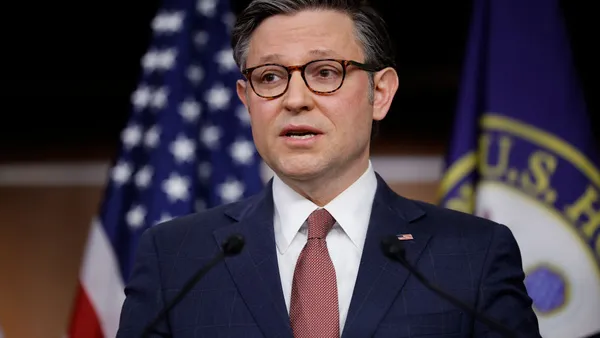Dive Brief:
- Michigan State University is without direct liability insurance to cover claims of sexual misconduct, The Wall Street Journal reported. The university lost the policy after it rejected an offer from United Educators, its insurer of nearly two decades, to reduce its coverage during renewal negotiations.
- United Educators offered to renew coverage under the condition that it would not cover future claims against the university's former sports doctor, Larry Nassar, who used his position to sexually abuse hundreds of women. Michigan State has settled with Nassar's victims for $500 million.
- The university has created a captive insurance company for its policy, which will cover "employee benefits, medical malpractice and other operational liability," according to The Journal. It does not specifically cover claims of sexual misconduct or the mishandling of those cases.
Dive Insight:
Whether Michigan State's insurance will cover all or some of the settlement costs has been an issue since the multi-layered scandal erupted.
Michigan State sued more than a dozen insurance companies, including United Educators, in July over the $500 settlement for the Nassar case, claiming the companies were improperly refusing to pay for the settlement and legal fees, according to the Detroit Free Press. The university is currently in mediation with those companies.
The university's board of trustees voted in June to cover the settlement costs by issuing bonds and hopes to pay down some of the debt by recovering funds from insurers. At question, however, is how the university will pay for other costs related to the scandal.
Michigan State isn't the first university in this position. In 2016, Pennsylvania State University reached a settlement with its insurer over $93 million that was paid to those who said they were victims of Jerry Sandusky, the former football coach convicted of sexually abusing young boys.
Colleges should be prepared for the high costs that come with sexual misconduct claims. In a review of about 1,000 sexual assault claims from students between 2011 and 2015, United Educators found roughly 100 of those cases resulted in monetary losses for the institution, averaging about $350,000 each, according to Inside Higher Ed.
Beyond immediate financial losses, universities with high-profile scandals often see a hit to their applications. In a 2016 paper, researchers found that when The New York Times mentions a scandal at least five times, the college sees a 9% drop in applications the next year.
However, such repercussions can be short-lived. Penn State, for instance, suffered a dip in applications after the Sandusky scandal but rebounded in 2014.
In addition, colleges may face fines under the Clery Act. The U.S. Department of Education fined the University of Montana for nearly $1 million for not accurately reporting sexual offenses and other crimes and fined Penn State for $2.4 million over the Sandusky case. MSU may also face fines following a report from federal officials that found violations of the act.











